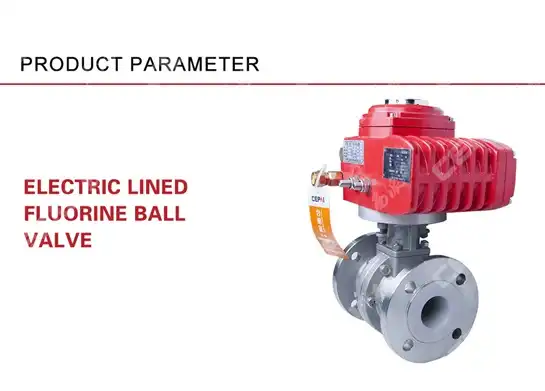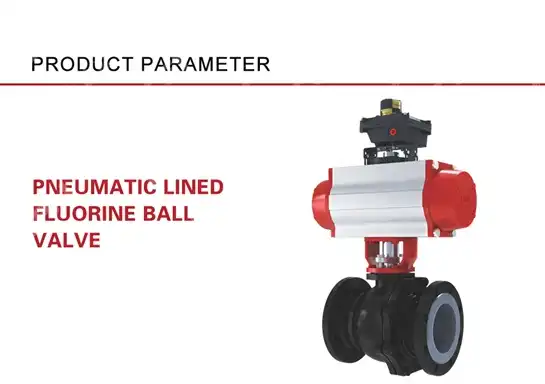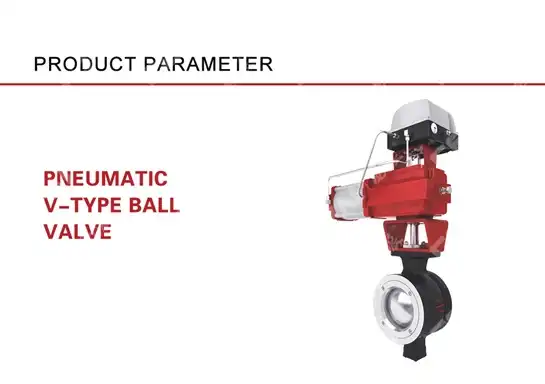How Ball Valve Design Impacts Flow Characteristics and Performance?
When production stops due to unexpected valve failure or inefficient flow control causes pressure drops that waste energy and compromise system safety, engineers face costly downtime and operational challenges. Ball valve design fundamentally determines whether your fluid control system achieves optimal flow characteristics, minimal pressure loss, and reliable long-term performance across demanding industrial applications in oil and gas, petrochemical processing, and power generation facilities.
Understanding Ball Valve Design Fundamentals and Flow Dynamics
Ball valve architecture represents the critical foundation for achieving superior flow performance in industrial fluid control systems. The spherical closure element, featuring a precision-machined through-hole, creates a flow path that directly influences system efficiency and operational reliability. Understanding how design variations affect flow characteristics enables engineers to select appropriate valve configurations for specific process requirements.

-
Port Configuration and Flow Capacity Relationships
The relationship between port design and flow capacity determines the overall efficiency of ball valve operations. Full bore ball valves feature oversized spherical elements where the through-hole diameter matches the pipeline internal diameter, eliminating flow restrictions and minimizing friction losses. This design proves essential for applications requiring unrestricted fluid passage, such as pipeline pig launching operations or systems transporting viscous fluids. Reduced port configurations utilize smaller ball elements with through-holes measuring approximately one pipe size smaller than the pipeline diameter, offering cost advantages while introducing controlled flow resistance. Standard port designs balance economic considerations with acceptable pressure drop characteristics for general-purpose applications. The choice between these configurations impacts system pressure drop, pumping requirements, and energy consumption patterns throughout the operational lifecycle.
-
Seat Design Influence on Sealing and Flow Performance
Seat geometry and material selection critically influence both sealing effectiveness and flow characteristics in ball valve systems. Floating ball designs allow the spherical element to move slightly within the valve body, pressing against the downstream seat under system pressure to create a tight seal. This configuration suits moderate pressure applications while providing reliable shut-off performance. Trunnion-mounted ball designs mechanically anchor the sphere at top and bottom positions, distributing operating torque through fixed support points rather than relying solely on seat compression. This arrangement proves essential for high-pressure services where excessive seat loading would occur in floating designs. The seat profile geometry affects the flow pattern as fluids transition from the pipeline into the valve body and through the ball opening. Smooth contours minimize turbulence and pressure recovery losses, while sharp transitions can create localized velocity increases that promote cavitation or erosion damage over extended operating periods.
Analyzing Flow Coefficient and Pressure Drop Characteristics
Flow coefficient values quantify the volumetric flow capacity of ball valves under standardized test conditions, providing engineers with essential data for system design calculations. The Cv coefficient represents the flow rate in US gallons per minute of water at 60°F that creates a one-pound-per-square-inch pressure drop across the valve. Full bore ball valves typically exhibit Cv values approaching or matching the theoretical maximum for a given pipe size, indicating minimal flow restriction. Reduced port designs demonstrate proportionally lower Cv values reflecting the additional flow resistance introduced by the smaller ball opening.
-
Pressure Drop Analysis and System Energy Impact
Pressure drop across ball valves directly influences pumping energy requirements and overall system efficiency. The spherical flow path geometry in full bore designs creates minimal turbulence and velocity changes, resulting in pressure drops typically ranging from 0.5 to 2 psi at nominal flow velocities. Reduced port configurations generate higher pressure losses, sometimes exceeding 5 psi depending on flow rates and fluid properties. These pressure differentials translate directly into energy consumption, with higher pressure drops requiring increased pump horsepower to maintain design flow rates. In large-scale industrial facilities processing millions of gallons annually, even modest pressure drop reductions through optimized ball valve selection can yield substantial energy cost savings. System designers must balance initial valve acquisition costs against long-term operational expenses when evaluating full bore versus reduced port alternatives for specific applications.
-
Cavitation and Flashing Considerations in Ball Valve Design
Cavitation occurs when local pressure reductions at the valve throat cause dissolved gases to form bubbles that subsequently collapse upon entering higher-pressure downstream regions. These implosions generate shock waves capable of removing material from valve internal surfaces, leading to premature failure and performance degradation. Ball valve design features that minimize velocity increases and provide gradual pressure recovery characteristics reduce cavitation susceptibility. V-port ball configurations with angled opening profiles create controlled flow restriction patterns that extend the cavitation inception point to higher pressure drop ratios. Flashing represents the related phenomenon where pressure reduction vaporizes liquid components that remain in vapor phase downstream. While less destructive than cavitation, flashing can cause erosion damage and requires careful consideration in ball valve selection for high-energy-dissipation applications.
Ball Valve Port Geometry Variations and Control Characteristics
Different ball opening configurations provide distinct flow control characteristics suited to specific operational requirements. Standard circular port designs excel at on-off service where valves operate primarily in fully open or fully closed positions. The flow characteristic exhibits a nearly linear relationship between valve opening angle and flow rate through the initial rotation range, then increases more rapidly as the valve approaches the fully open position.
-
V-Port Ball Valve Flow Modulation Capabilities
V-notch ball configurations feature triangular or trapezoidal openings rather than circular ports, creating specialized flow characteristics ideal for throttling applications. As the ball rotates from closed position, the narrow apex of the V-opening initially permits limited flow at high velocities, providing fine control resolution at low flow rates. Continued rotation progressively exposes larger V-opening areas, increasing flow capacity at accelerating rates as the valve approaches full open position. This creates an equal percentage flow characteristic where each increment of valve travel produces a flow change proportional to the flow rate existing just before the change occurred. Equal percentage characteristics prove particularly valuable in process control applications where maintaining stable loop gain across varying operating conditions enhances control system performance. The V-port design also improves resistance to cavitation damage by distributing high-velocity flow over larger areas and providing more gradual pressure recovery compared to circular ports. CEPAI Group's advanced ball valve designs incorporate precision V-port geometries manufactured through high-precision intelligent manufacturing processes, ensuring consistent flow characteristics and extended service life in demanding throttling applications.
-
Segmented Ball Designs for Specialized Applications
Segmented ball valves utilize partial spherical elements rather than complete spheres, reducing operating torque requirements in large-diameter applications. The reduced mass and inertia enable faster actuation response times and lower actuator size requirements. Flow characteristics in segmented designs approximate equal percentage curves similar to V-port configurations, though the specific profile depends on the segment geometry. These valves find application in situations requiring rapid emergency isolation or frequent position changes where the reduced rotating mass provides operational advantages. The design maintains effective shut-off capability through precise seat engagement while offering improved flow control compared to standard circular port configurations.
Material Selection Impact on Flow Surface Characteristics

Internal surface finish and material properties significantly influence flow behavior and long-term performance in ball valve systems. Smooth ball and body bore surfaces minimize friction losses and turbulence generation, preserving pressure energy and reducing noise levels. Surface roughness measurements typically specify maximum Ra values between 0.4 and 0.8 micrometers for precision ball valves serving critical applications. Material hardness and corrosion resistance affect the ability to maintain design surface conditions throughout extended service periods.
-
Coating Technologies for Enhanced Flow Performance
Advanced surface treatments and coating technologies protect ball valve internal surfaces from corrosive attack and erosive wear that degrades flow characteristics over time. Hard chromium plating, tungsten carbide coatings, and ceramic surface treatments provide exceptional hardness values exceeding HRC 60, resisting particle erosion in abrasive service applications. These protective layers maintain smooth flow surfaces despite challenging operating conditions, preserving design flow coefficients and minimizing performance degradation. CEPAI Group applies rigorous quality control procedures including dimensional inspection and surface finish verification throughout manufacturing operations, ensuring ball valves meet stringent specifications for flow surface quality. The company's CNAS-certified testing laboratory validates coating adhesion, hardness, and corrosion resistance through comprehensive material analysis programs aligned with international standards.
-
Metallurgical Considerations for Specialized Services
Ball valve materials must withstand specific fluid chemistry and temperature conditions while maintaining dimensional stability and mechanical properties. Stainless steel alloys such as 316/316L provide excellent corrosion resistance for general-purpose applications across moderate temperature ranges. Duplex and super duplex stainless steels offer enhanced strength and chloride stress corrosion cracking resistance for offshore and high-chloride environments. Exotic alloys including Inconel, Hastelloy, and Monel serve extreme corrosion conditions where standard materials prove inadequate. Material selection influences thermal expansion characteristics that affect seat loading and sealing performance across temperature cycles. Proper material matching between ball, body, and seat components ensures compatible expansion rates that maintain seal integrity while preventing galling or seizure during operation.
Conclusion
Ball valve design profoundly impacts flow characteristics and operational performance through port configuration, seat geometry, material selection, and surface finish quality. Understanding these relationships enables engineers to specify optimal valve solutions that minimize pressure drop, prevent cavitation damage, and provide reliable long-term service. Strategic design choices balance initial costs against lifecycle operating expenses while ensuring compatibility with specific process requirements and operating conditions.
Cooperate with CEPAI Group Co., LTD.
As a China Ball Valve manufacturer and China Ball Valve supplier, CEPAI Group Co., LTD. delivers High Quality Ball Valve solutions through advanced intelligent manufacturing capabilities and comprehensive quality management systems certified to API 6A, API 6D, ISO 9001, and Ball Valve SIL standards. Our China Ball Valve factory features Asia Pacific's longest high-precision flexible production line, producing Ball Valve for sale at competitive Ball Valve price points backed by technical expertise and global service support. Contact our engineering team at cepai@cepai.com to discuss your specific requirements and discover how our China Ball Valve wholesale solutions enhance your fluid control systems. Save this resource for quick reference when evaluating valve specifications for your next project.
References
1. Zafer, N., & Luecke, G. R. (2008). Stability of Gas Pressure Regulators. Applied Mathematical Modelling, 32(1), 61-82.
2. Rahmeyer, W. (2002). The Ball Valve as a Flow Measuring Device. Journal of Fluids Engineering, 124(4), 1072-1074.
3. Song, X. G., Wang, L., & Park, Y. C. (2009). Fluid and Structural Analysis of Large Butterfly Valve. Journal of Mechanical Science and Technology, 23(12), 3348-3361.
4. Jin, Z. J., Gao, Z. X., Li, X., & Qian, J. Y. (2016). Computational Fluid Dynamics Analysis and Structure Optimization of a Venturi Tube. Engineering Computations, 33(2), 395-415.
_1746598568348.webp)
Get professional pre-sales technical consultation and valve selection services, customized solution services.

About CEPAI


